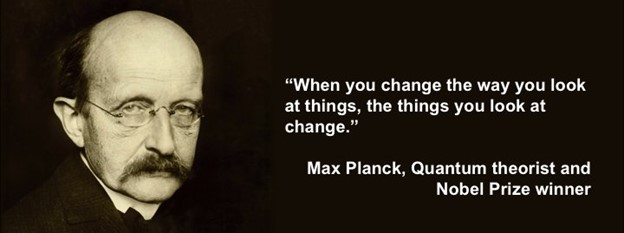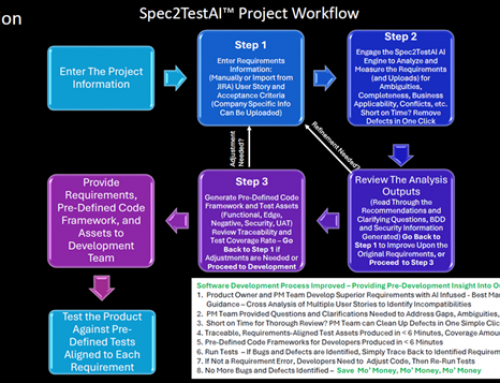Blog
Sustainable IT Is So Much More Than Reducing Energy Use
Missy Trumpler | December 21, 2023

For the past two decades I have been championing sustainability in business operations. When I got into sustainability there were no college courses yet, there was a growing interest in the Dow Jones Sustainability Index by about 15% of companies, Leadership in Energy and Environmental Design (LEED) had just come out with its first version, and the “Natural Step” was really the first step in businesses looking at their environmental impacts. We’ve come a long way since then, yes, but in reality, out of necessity we were more sustainable before we became fully industrialized and treated the planet as our infinite supplier as opposed to our rapidly depleting provider.
In Business Operations sustainability embraces the triple-bottom-line approach where leadership gives equal importance to “People, Planet, and Profit”; where no one aspect is given higher priority than the other, no aspect is ignored with total disregard of another, and the intersection of all three is known as the sustainability “sweet spot”. Oftentimes businesses elevate profits over everything else thinking that if the business is making plenty of money, there’s plenty of money to throw at the problems that arise from not doing well by the human stakeholders, or the voiceless indispensable stakeholder that often gets overlooked if not flat out ignored, mother nature. By now, I think most of us recognize that this modus operandi is not sustainable for a myriad of reasons.
When getting down to the “nitty gritty” of sustainable business operations, every aspect of the business functions, standard workflows, and processes must be analyzed and measured. One of the key phrases we would apply was you can’t track what you don’t measure, and you can’t improve upon what you don’t track. Under the operations umbrella this equates to measuring through KPI’s all processes (whether human driven or automated), delivery systems, purchasing, manufacturing, energy and water use, resource consumption, and the resulting waste streams associated with each area. Needless to say, it’s a lot. In my experience, one of the areas that has been touched upon in the most minute way, and yet has infiltrated every single business that exists, is IT.
IT is usually addressed in Sustainability by looking at the energy consumption and energy use intensity of processing and storing data, or employing software applications that more efficiently run building systems, customer interface, purchasing decisions, etc. But that’s easy, and sustainability is not easy. It’s about taking deep dives into how to improve processes to redefine business as usual into taking a more pro-active approach to achieving business as elevated. How does one make that happen? By turning your business operations and processes into an efficient well-oiled machine that is easily replicated reducing stress and stakeholder burn-out (let’s not forget human capital is a resource), as well as minimizing the negative impacts of resource pillaging, disruption, and depletion and subsequent generated waste streams. Perhaps the reason IT and software development is overlooked is because the processes are perceived as being internalized by servers, routers, desktops and various other hardwares. But that is the wrong way to look at IT, and the current opportunities to be pro-active in software development are not intangible; they are overlooked, and in my own case, until recently, misunderstood.
I referenced LEED earlier as one of the first real efforts to make buildings and infrastructure more sustainable. LEED, whether embraced for an actual certification or not, has metamorphosized into the building codes; the standard in designing, constructing, and operating buildings. The groundbreaking aspect of LEED was to get all stakeholders in the same room prior to designing the building and learning what the owner’s project requirements are, the architect’s basis of design, the mechanical requirements of the engineer, and the maintenance requirements of the building operators. This meeting, if not multiple meetings, is called a Charette and is led by a LEED Accredited Professional (AP) and is required at the outset of every LEED project.
Well, guess what? Software Development follows much the same project path as a building development project. What’s been missing is the LEED perspective, until now. There is a platform, Spec2TestAI, that does for Software Development, without the accompanying certification, what LEED has done for building design, construction, and operations.
The Spec2TestAI Platform, with the assistance of Generative AI, acts as the Accredited Professional of any Software Development Project and serves as communication hub, requirements and user story coach, scoping and planning assistant, behavior driven design and security requirements developer, and quality assurance test case developer. Spec2TestAI, like a LEED AP, acts as the guide, teacher, and guardrail to assist software development teams in creating superior quality software products with less defects and considerably less technical debt. Every stakeholder whether Owner, PM, Scrum Master, Business Analyst, SME, Quality Tester, Designer, Engineer, and Developer are invited into the Software Development project prior to development. Every stakeholder can see exactly how the development of a project will be implemented providing a pre-development, pre-defect, pre-scope creep view into exactly what is being specified for development and deployment. This pre-development view serves as the quality assurance guide after the software development has occurred and before its deployed.
Think of the advantages of this pre-development view into the SDLC. A 2022 Study by the Consortium for Information and Software determined there is a 2.4 Trillion (yes, with a T) Dollar Software Quality Crisis that exists today in the US alone. Those costs are attributed to technical debt and downtime due to problems caused by unintended defects, scope and feature creep, poor communication through inadequate requirements and user stories and inconsistent language, and ignorance of ancillary systems that are dependent upon one another. It’s easy to fall prey to any one of these common issues. But it is preventable with a pro-active approach and employing the right tools. Spec2TestAI was created specifically for this reason, to minimize preventable Software Development defects and failures.
How does this apply to Sustainable IT? Human capital becomes more efficient and the stresses of ambiguity minimized; the Requirements and User Story Analysis happens in less than 2 minutes and stakeholders are provided with enhancements and recommended questions aligned with SDLC Best Management Practices for maximum improvement; and once those improvements are made and the inputs tested, Test Cases, Negative and Edge Test Cases, BDD and Security Assets, and Prioritized Selenium Code are all generated in under 4 minutes for a pre-development view into exactly what you have specified for the project outcomes to be. This is no longer the tail wagging the dog approach of encountering a defect on deployment that is directly related to a poorly defined Requirement or User Story that now must be fixed. No more tens of hours of writing test cases that have inadequate resemblance to specified requirements. No more hours, if not days, of project team down-time while looking to find the root cause of a defect because either Spec2TestAI helped you prevent it, or because there is full traceability and transparency to identify exactly where in the SDLC process the defect prompt occurred. And equally as important, Spec2TestAI improves user skillsets across the SDLC spectrum.
After 15 years of working with businesses in every vertical imaginable to reduce risks, costs, and negative human and environmental impacts while improving overall efficiency, contribution to the planet and their human stakeholders; I left my own company to market Spec2TestAI. Sustainable IT in my opinion has always been a nebulous concept, though IT now affects almost every aspect of human existence, and with the advent of AI it’s going to become even stickier. I’m excited about this platform and the positive impact it will have on every business that employs it. I know if you see it in action and understand its capabilities, you will be excited too. The Software Development Life Cycle will never be the same, Sustainable IT will never mean the same, and take heart, the days of the 2.4 Trillion Dollar quality crisis are numbered.




